Weather Prediction By Numerical Process
Weather Prediction By Numerical Process was a participatory performance for Resonances III Festival where people collaboratively calculated a weather forecast through human labour, thus turning the act of calculating the computation into a social action. A tribute to the heroic effort of Lewis Fry Richardson, a pacifist Quaker who spent his time as a medic during World War I, calculating the first numerical weather forecast by hand. Working before the days of electronic computers, he had the utopian dream that the nations of the world would come together to create a vast “human computer” consisting of tens of thousands of mathematicians who would work around the clock to calculate the weather for the good of all humankind.
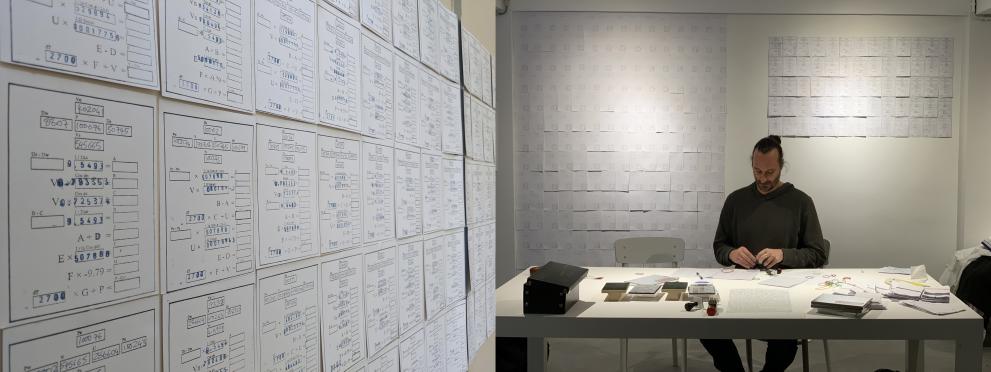
Weather Prediction By Numerical Process, 2019, L. Autogena & J. Portway.
A collaboration between Lise Autogena & Joshua Portway, Jutta Thielen-del Pozo, Florian Pappenberger (ECMWF), and Peter Lynch (School of Mathematics and Statistics, University College Dublin) as advisor.
More about the work on the artist’s website.
Later work on Kuannersuit/Kvanefjeld presented @ JRC (Oct 2022).
Conversation on Time
The installation Conversation on Time for the Resonances III Festival invited visitors to reflect on the idea of time and how our perception of reality has changed through Big Data and associated new technologies. The idea of time in science is compared with three Greek concepts of time (Chronos, Kairos, Aion). In a multi-screen projection, the installation approaches the idea of time from three different directions: human time, earth time and universe time. The installation contains a film about the concept of time for which artist Maria Rebecca Ballestra edited a poetic text, expressly created for the project by the UK poet Mario Petrucci, a Big Data visualisation, and a text by JRC scientist Nikolas Stilianiakis.
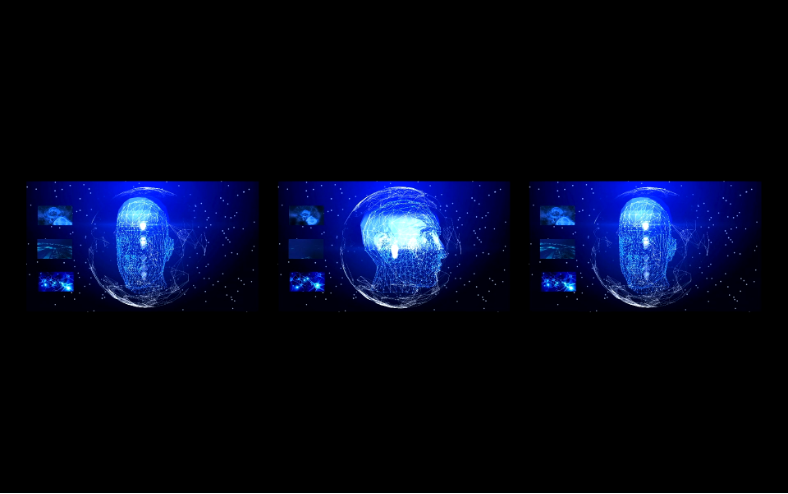
Conversation on time, 2019, R. Ballestra.
A collaboration between Rebecca Ballestra, Nikolaos Stilianakis, Mario Petrucci (poem and voice), Alessandro Olla (music), and Salvatore Rugolo (editing).
Nature of Knowledge - The Uncertain Structure
In real time, the installation Nature of Knowledge - The Uncertain Structure was a SciArt experiment that transferred data generated by an experiment at the JRC dealing with climate change consequences, to a spatial installation in the shape of a spiral. The uncertainty provides contrast to the expected evolution of the experiment. Influenced by previous data, experiments, or models, anticipation arises regarding the duration of the experiment and the moment when the structure becomes irreversibly deformed.
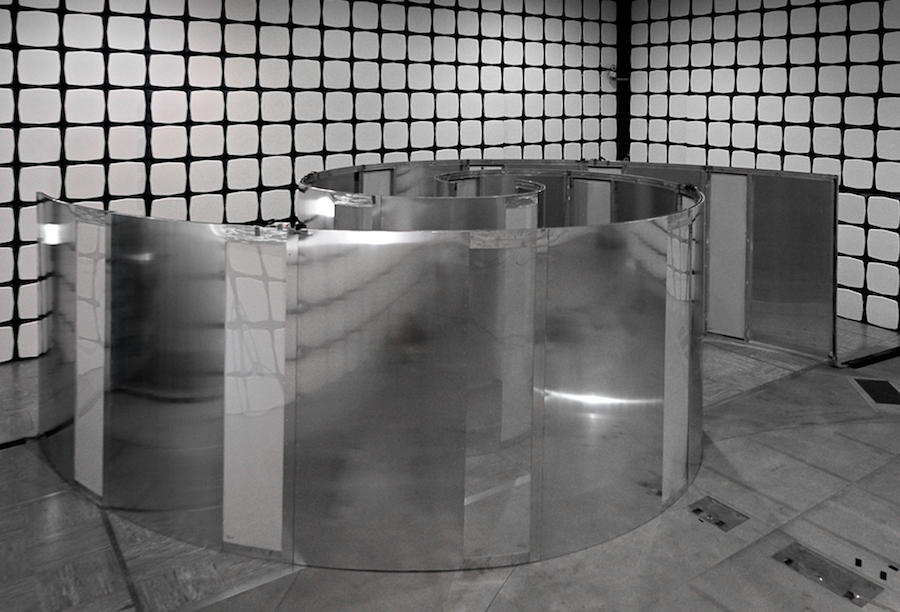
Nature of Knowledge - The Uncertain Structure, 2019, J. Brockmann.
A collaboration between Jenny Brockmann, Pierre Pegon, Diana Rembges and Marcelo Masera.
More about the work on the artist’s website.
Silicon Synapse
For Resonances III Festival, AlanJames Burns created Silicon Synapse, a virtual reality and psychoacoustic artwork that creates an immersive journey into an artificial conscious mind. It takes the viewer on a sensory loop through various levels of animated dreamlike conscious realms, travelling from a black void into a conscious and preconscious mind imbued with references to forms of Transhumanism & Jungian archetypes. The sound evolves from a symphony of warped, guttural sounds to a cerebral inner dialogue. Through the self-reflexive use of wearable VR technology, Silicon Synapse engages the cognitive impact of high-tech, through the lens of the very mediums that are altering and shaping the future of our inner experiences.
Silicon Synapse, 2019. AJ. Burns.
A collaboration between AlanJames Burns, Thierry Benoist, Vasiliki Charisi, Nicole Dewandre, and Emilia Gomez.
More about the work on the artist’s website.
The Sound of Waves
The Sound of Waves depicted in a literal sense the migrational waves of the last ten years in Europe (2008-2018). A sphere held an electromagnetic installation, alongside ferrofluid. The waves were created with the use of electromagnets, through the use of a control grid.
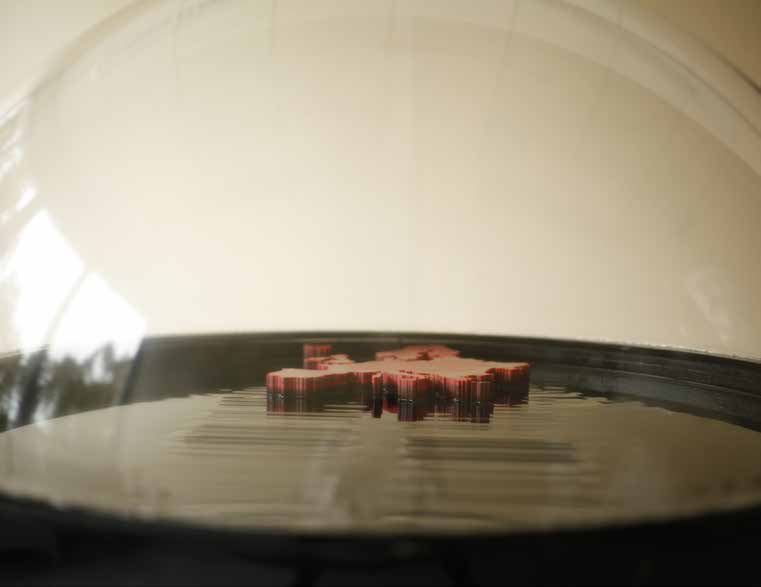
The Sound of Waves, 2019, D. Djamo.
A collaboration between Daniel Nicolae Djamo, Raimondo Giuliani, Jorge Figueiredo Morgado, Daniela Ghio, Michele Vespe, Francesco Mugnai, Pascal Colpo, Douglas Gilliand, and Salvatore Rinzivillo (ISTI-CNR Pisa).
More about the work on the artist’s website.
Landslide
The focus of the Landslide installation for Resonances III, was on seismic data and two structures which are composed by specific actuators that are able to simulate seisms in a smaller scale than the natural ones. The backdrop of Landslide is the current questioning of scientific certainty and the danger of collapse of our civilisation due to environmental degradation, climate change and socio-political dysfunctions.
Artist Tiny Domingos researched the effect and scale of natural disasters. In the experiment Flank collapse, the team at the JRC converted economic data so that it could be used to simulate a seismic event. In this way, Tiny was able to draw connections between natural disasters and economic crises, and produce The Price of Volatility, an outdoor sculpture inspired by the relationship between these two types of event and respective datasets, representing how our lives are always unstable.
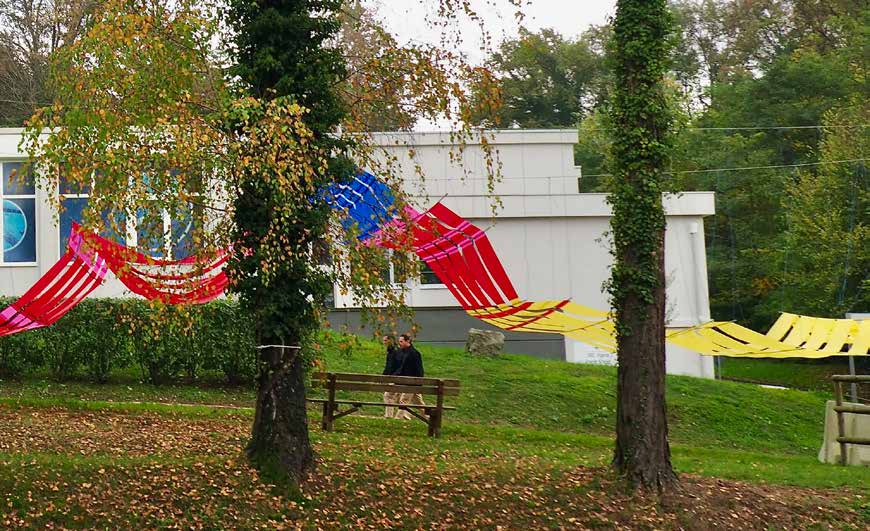
Price of Volatility, 2019, T. Domingos.
A collaboration between Tiny Domingos,Francesco Mugnai, Pierre Pegon, Luca Barbaglia and Luca Tiozzo Pezzoli.
More about the work on the artist’s website.
Horaica
Referring to basic aspects of plant nanotechnology, the installation Horaica makes visible, through the plants' status, the hidden micro environmental status/structure, which has a different time scale than the human perception. A particular type of plant is equipped with a sensor, a computer and the plants are mobilised so that they autonomously “walk” through the exhibition area, showing their real time emotion, becoming a smart environmental awareness node.
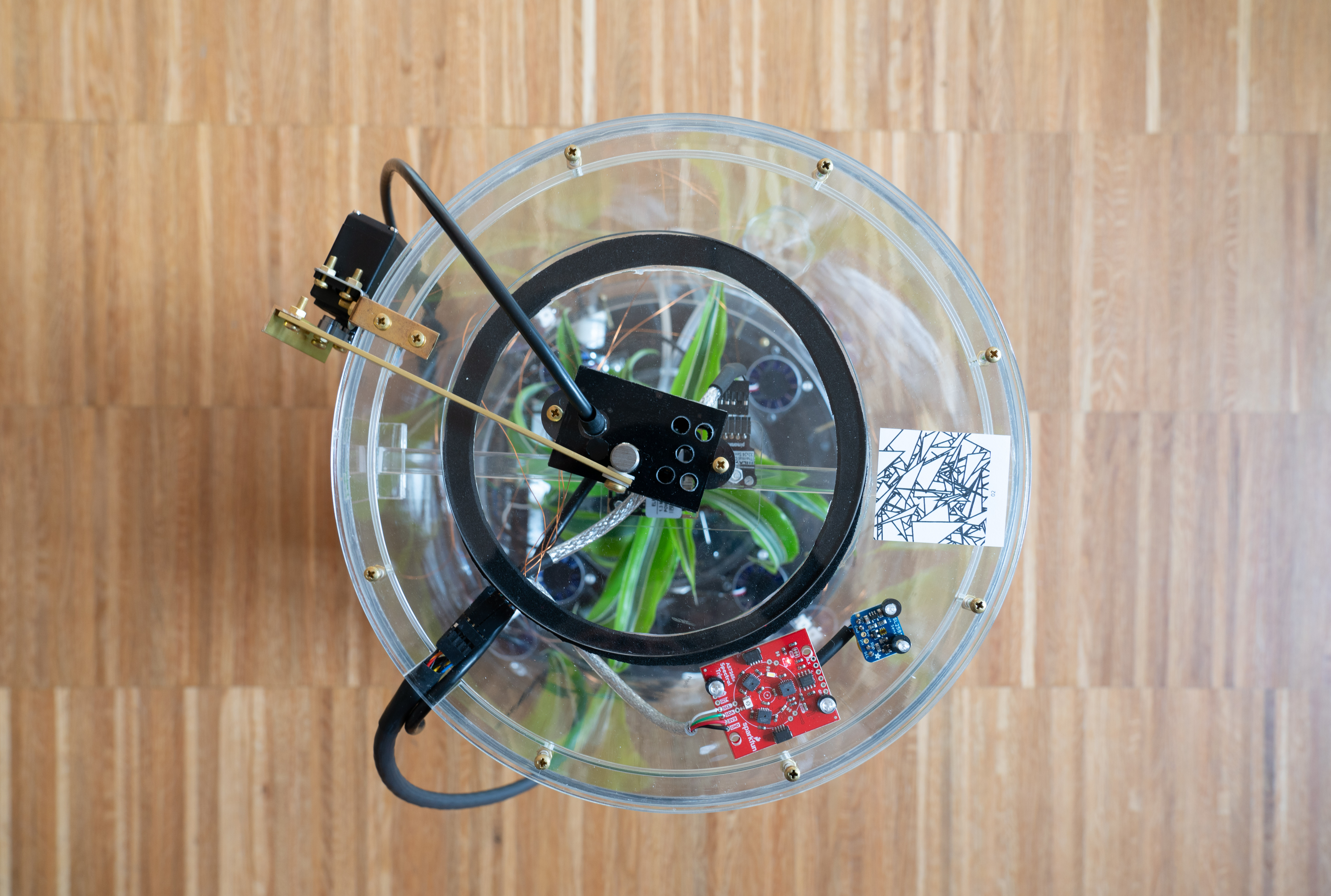
horaica, 2019, A. Honda
A collaboration between Akitoshi Honda, Pascal Colpo, Andrea Valsesia, Diana Rembges, and Markus Richter (Beuth Hochschule).
More about the work on the artist’s website.
Quantum Oscillographs
For the installation Quantum Oscillographs, artist and curator Melanie King worked together with JRC scientist Constantin Coutsomitros who passed electronic pulses through his "quantum walks" experiment. This experiment involved a laser beam which is pointed at a crystal which then splits the beam into two entangled beams. The two Quantum Oscillographs that Melanie presented at Resonances III Festival visually represent the two entangled beams. Visually, the oscillographs should look exactly the same, but observers should detect the differences.
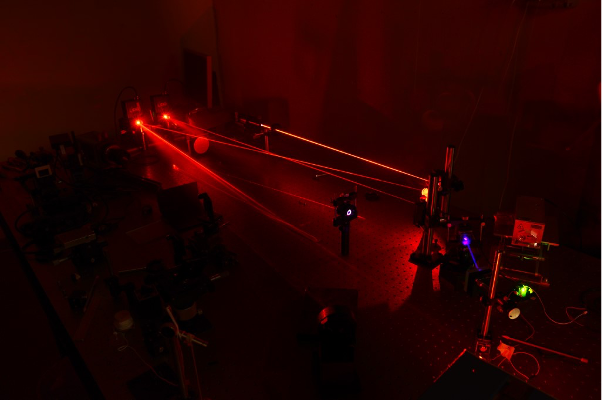
Quantum Oscillographs, 2019, M. King.
A collaboration between Melanie King, Constantin Coutsomitros (retired), Flavio Bono and Eugenio Gutierrez.
More about the work on the artist’s website.
To Breathe
Artist Siobhán McDonald revisited historical processes of botanic image making to create drawings and 3D works of plants that coexist with toxicity. Using air-borne pollutants collected from EU cities, ash and film footage from EU volcanoes, she created drawings, paintings and film works to show how plants and humans are adapting to air pollution, both now and historically. These included ...
- Breathe, a multi-platform project, responding to the broader context of air and how our breathing has changed due to the long process of human evolution and the fact that everything breathes, and everything is interconnected through breath. The film weaves together narratives of studies in human breath, medicine and ancient plant remedies to explore the idea of coexistence in a world moved by invisible networks.
- Connected by Air, which takes as its subject the co-existence between the lungs of the earth, humans and plants. The project explores a selection of major European volcanoes and points to the cycle of the earth breathing within the carbon cycle of our ecosystems. The installation is composed of a series of glass prisms embellished from the repeated application of thin, transparent layers of pigment made from volcanic ash to form an optical quality surface.
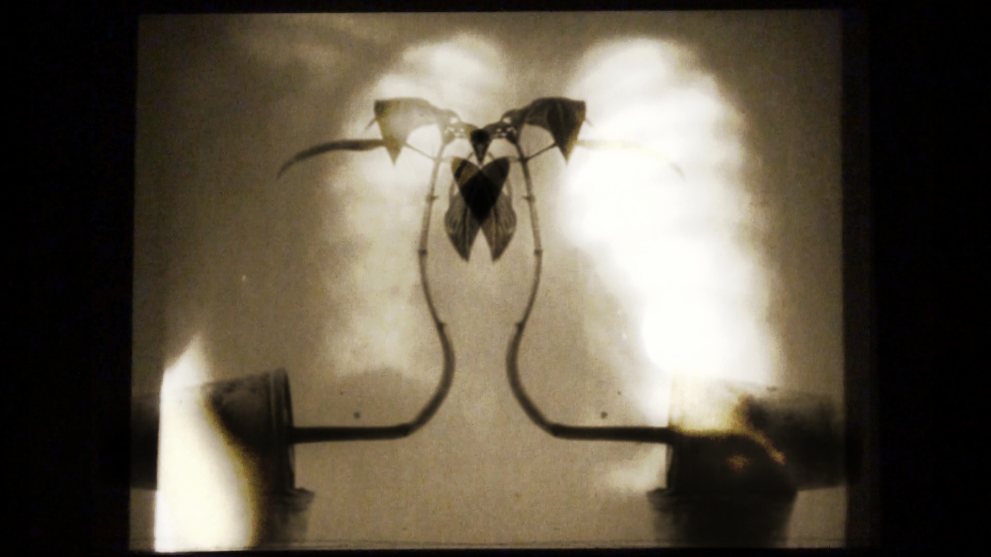
Breathe, 2020 - Installation shot, Datami Bozar, Brussels 2020.
A collaboration between Siobhán McDonald, Francesco Mugnai, Jean-Philippe Putaud and Tullio Ricci (INGV).
More about Breathe on the artist’s website.
More about Connected by Air on the artist’s website.
Siobhan in residence @ JRC 2021
Siobhan at STUDIOTOPIA
Siobhan at Ars Electronica 2022.
Retinitis Pigmentosa
Retinitis Pigmentosa is a sculptural work employing the materials of genetic data research, focusing on the disease retinitis pigmentosa. Retinitis occurs when the RPGR gene malfunctions. This gene provides instructions for making a protein that is essential for normal vision. An inherited mutation in this gene is thought to cause a malfunction in the protein, leading to this rare genetic disease which causes night blindness in early childhood followed by progressive daytime vision loss. The structure of the sculpture focuses on the location and shape of the mutated protein associated with retinitis pigmentosa. The undulating glass slides are part of a highly specialised technology developed for genomic research. From a biological specimen, DNA is extracted and processed to remove it from all other matter, leaving only the genetic sequence. This DNA is then inserted into chips, scanned, read by computer software and thus translated into data.
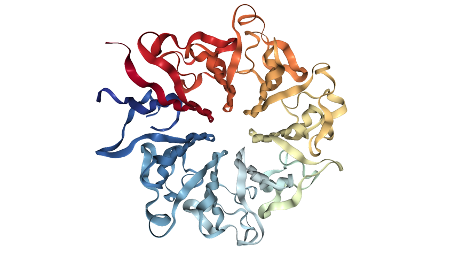
4JHN The crystal structure of the RPGR RCC1-like domain, RCSB PDB, http://www.rcsb.org/structure/4JHN1
A collaboration between Maria McKinney, Mauro Petrillo, and Valentina Paracchini.
B-scope, C-index
Encouraged by movements such as the Quantified Self, whose motto is "self-knowledge through numbers", a growing number of people across the globe are embracing practices of self-quantification and tracking in the spirit of improving their productivity and health. Martina O’Brien's installation for Resonances III Festival, B-scope, C-index, explored the ocean as a Quantified Other in conjunction with the mechanisms of linear time, travel time and time travel. Two double-channel videos combine a mixture of imagery including landscape footage, simulated 3D model footage and footage of sea, shoreline and land based monitoring systems.
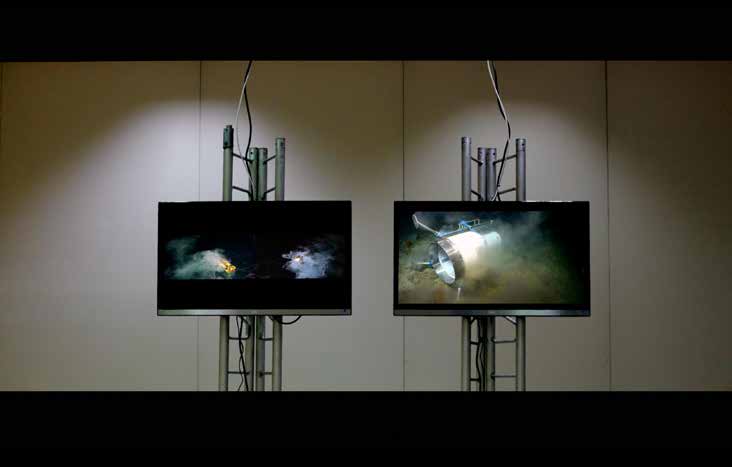
B-scope, C-index, 2019, M. O'Brien.
A collaboration between Martina O’Brien, Thomas Petrogliakis, Florian Pappenberger (ECMWF) and Aaron Lim (University College Cork & The Irish Centre for Applied Geoscience).
More about the work on the artist’s website.
Resonance Space: Immersive Big Data Experience
Artist and professor Alexander Peterhaensel's installation Resonance Space: Immersive Big Data Experience, consisted of an Augmented Reality/immersive installation on the topic of global warming. He created a responsive audiovisual environment: a resonant space which reacts to the presence of the user/visitor. The virtual environment, based on Big Data sets of global weather data, metaphorically and factually representing our world climate, will be thrown out of balance by the presence of the visitors. The more the visitors move around in the installation, or the more energy they emit, the more the environment will be thrown out of balance. The installation will then try to balance itself out in a co-active dialogue with the interfering visitors, reflecting their activatedness and energy level. A calmer behaviour of the visitors leads to a calmer reaction of the environment.
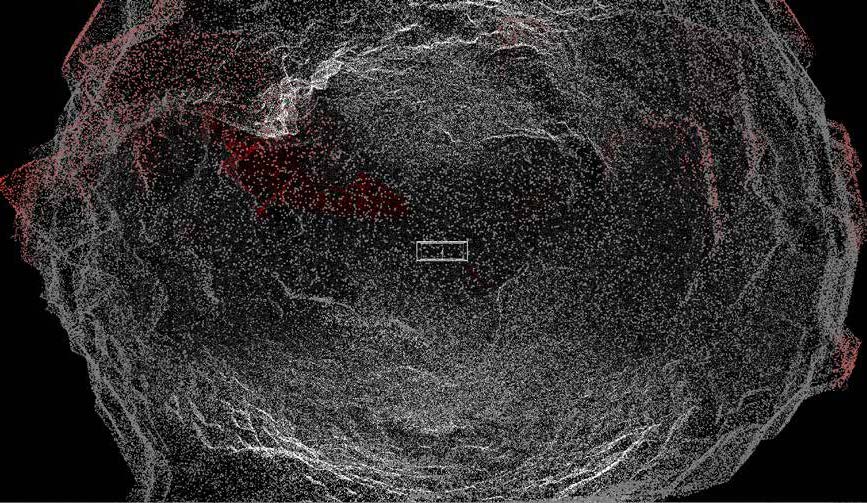
Resonance Space(s), 2019, A. Peterhaensel.
A collaboration between Alexander Peterhaensel, Daniel Tirelli, Jutta Thielen-del Pozo and Thomas Petroliagkis.
Alexander Peterhaensel website.
More about the work on the artist’s website.
Work on the New European Bauhaus.
VR experience @ JRC Ispra (2021).
Showing @ Bihar Museum (India, Aug-Oct 2023).
My Data and Me: Una Storia d'Amore
My Data and Me: Una Storia d'Amore is a tragic opera that explores the re-positioning of humans in relation to new conceptions of data. The escalating scale of data means that the humanity must reposition itself – not as an agent for information, but as companion to it. Part of the project is the design and building of a “robot opera singer”, Hans, to play alongside a soprano, Juissy. The future: Juissy and Hans live alone underground, in a former nuclear bunker under the present JRC site in Ispra. In order to prevent her going insane, they re-enact her fantasies in the form of an opera – complete with star-crossed lovers, a ballroom scene, and a duel. But when Juissy wakes up to reality, she becomes unsure of Hans' real intentions – or indeed, of who she is. This Gesamtkunstwerk comically explores new engagements between human and non-human, enabled by the new frontiers of Big Data – including sex, art, identity and health.
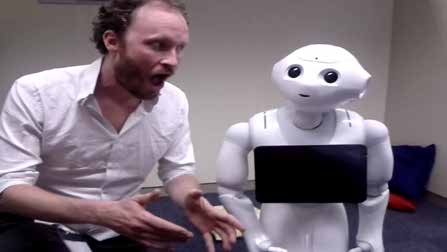
My Data and Me: Una Storia d'Amore, 2019. R. Pettifer, T. Prasqual.
A collaboration between Richard Pettifer, Tomasz Prasqual (composer), Vasiliki Charisi, Marius Miron, Songul Tolan, Emilia Gomez, Nicole Dewandre, and Nikolaos Stilianakis.
More about the work on the artist’s website.
IN(de)Finite - Never consider your mind just as a mirror of reality
In the sound installation IN(de)Finite - Never consider your mind just as a mirror of reality, composer and sound architect Tomasz 'Prasqual' Praszczałek took a critical philosophical look on Big Data and its perspective of infinity. He highlighted the new concept of humanness with relationality and mutuality at its core. Filtering is a new epistemological gesture of dealing with masses of information: managing the saturation instead of accumulation or striving for more. The filter is present in the sound, but also as the grid over the audience. The grid puts the print into the skin of the performers, but also into the mind of the spectators. The time needed for the impact is experienced as a pure duration. This is an experience of expanded present, instead of journey or heading somewhere. Giving the feeling that one can lay into the present, shifts us from speed to duration.
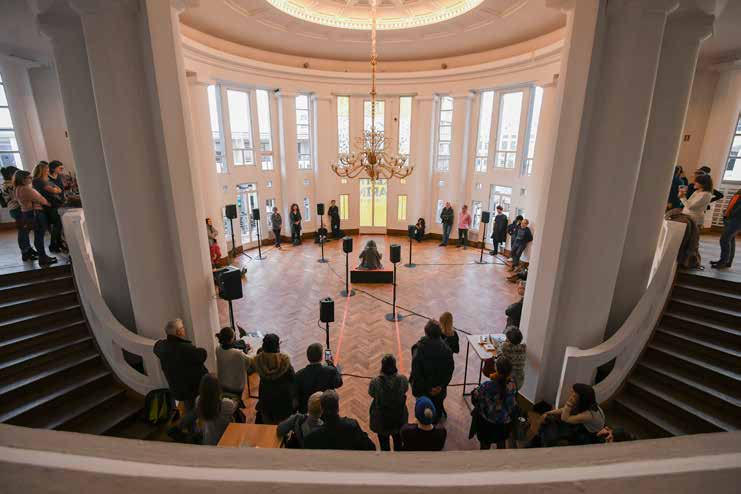
IN(de)Finite - Never consider your mind just as a mirror of reality, 2019. T. Prasqual
A collaboration between Tomasz 'Prasqual' Praszczałek and Nicole Dewandre.
More about the work on the artist’s website.
GAIA 5.0: A Holographic Image ‐ Ambience
In this installation Planet Earth was represented as multi-dimensional dynamic holographic model named GAIA 5.0: A Holographic Image ‐ Ambience. The hologram installation provides an aesthetic experience of the beauty of the planet thwarted by an immersive crisis scenario due to what is called climate change. This holographic 4D visualisation helps understand the earth's reaction to pollution: Earth in a state of emergency.
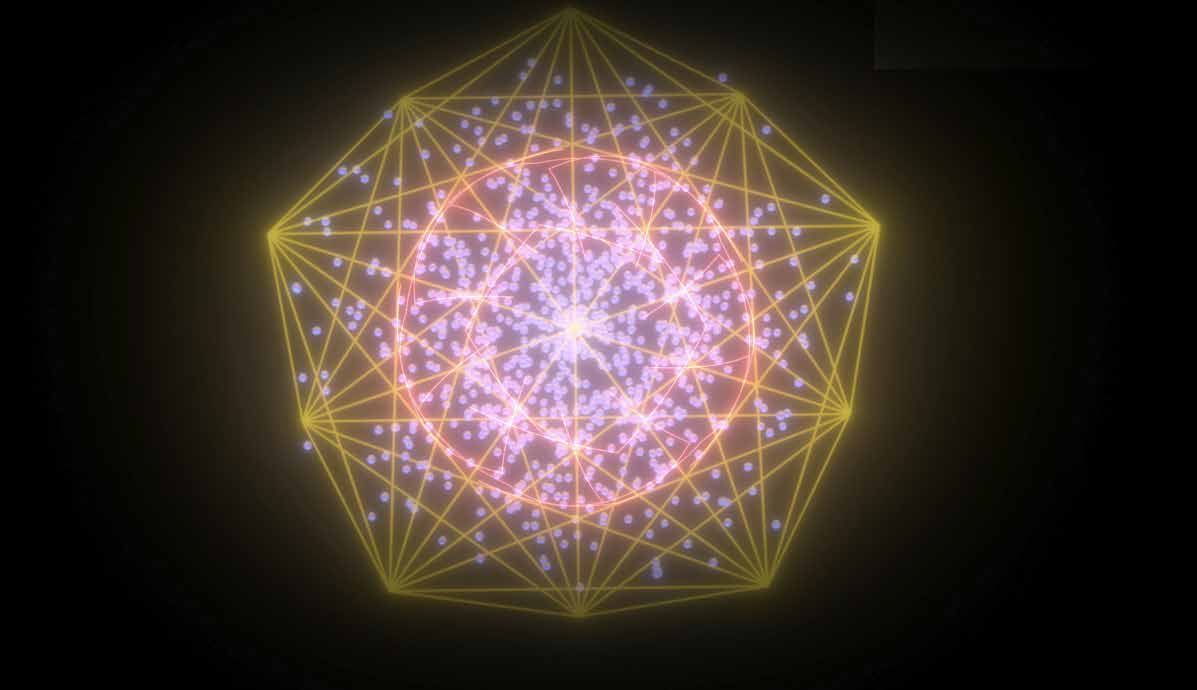
GAIA 5.0, 2019. R. Quehenberger.
A collaboration between Renate Quehenberger, Rita Van Dingenen, Thomas Petroliagkis, Andreas Wierse (SICOS), Louise Arnal and Kristian Mogensen (ECMWF), Uwe Wössner and Leyla Kern (HLRS Stuttgart).
between systems and selves
The sculpture between systems and selves aimed to explain how algorithms and malware work and what the place of the human decision in the process is, highly relevant for citizens’ rights and policymaking. The installation made malware and algorithms human-readable by visualising "structures". These "structures" are data points that are brought to the surface and compared to each other.
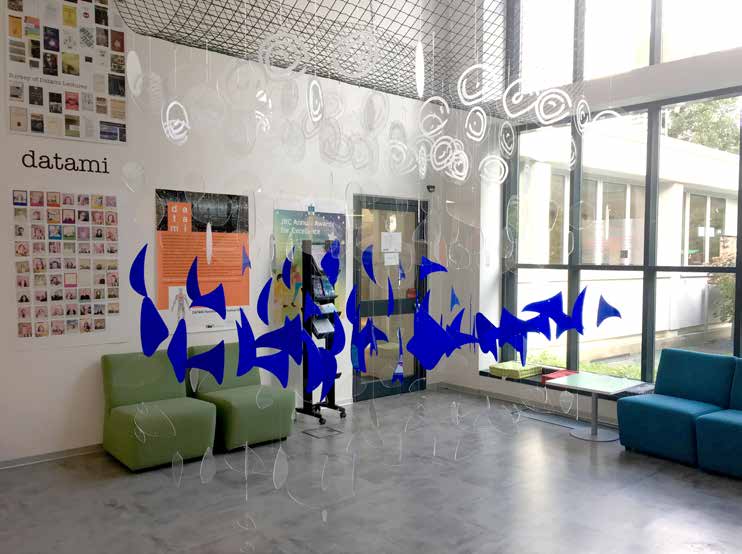
between systems and selves, 2019. C. Sinders.
A collaboration between Caroline Sinders, Stephane Chaudron and Henrik Junklewitz.
Life is Motion
The interactive installation Life is Motion illustrated an allegory between the genetic information of humans and the particular nodal structure of Chladni plates. Physicist and musician Ernst Chladni, dubbed the father of acoustics, researched the motion of vibrating plates in the 19th century. Each object has its own resonant frequency. Artist Nicolas Strappini explored this allegory with a "resonance" installation that invited participants to create their own individual patterns using sand on plates during the Resonances III Festival.
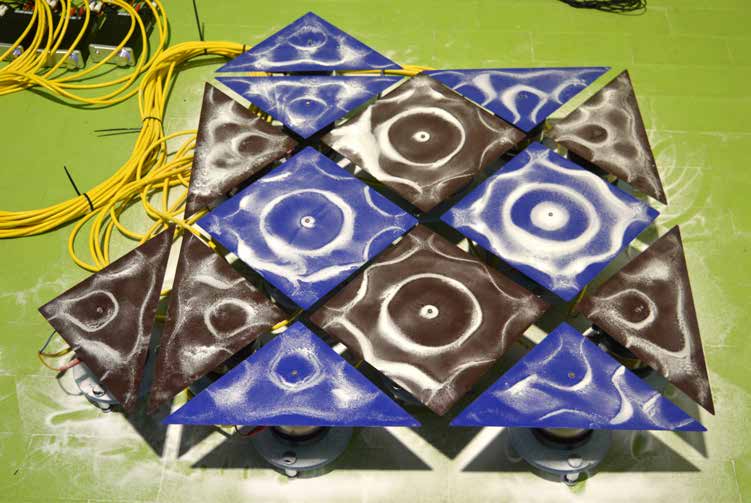
Life is Motion, 2019, N. Strappini.
A collaboration between Nicolas Strappini and Daniel Tirelli.
The Tannhäuser Gate
At Resonances III Festival, sound artist and audio engineer Giorgo Sancristoforo presented the installationThe Tannhäuser Gate. Made of two pillars, it forced the public to choose between passing through the gate and proceeding in another room, or standing still in front of the gate. The pillars contained the author’s DNA data in two small computers. The genome of the author was displayed on LED matrixes on the pillars and was converted to sound with quaternary mathematics. When the public passed through the gate, the screen rose and radioactivity mutated the author’s DNA, thus changing the DNA display and sound.
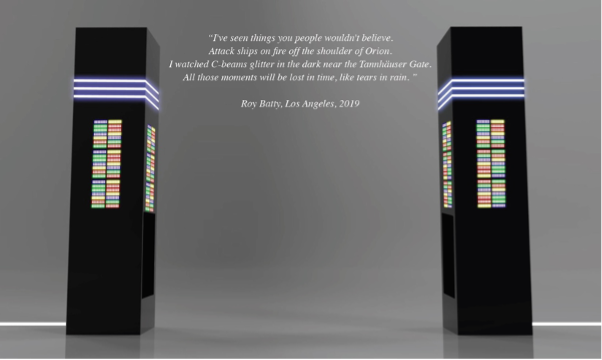
The Tannhäuser Gate, 2019, G. Sancristoforo.
A collaboration between Giorgio Sancristoforo and Valentina Paracchini, Mauro Petrillo, Vittorio Forcina, Paolo Peerani.
Giorgio Sancristoforo website.
More about the work on the artist’s website.
Why Am I Seeing This?
The installation by multidisciplinary artist Ivana Tkalčić presented fictional bubble worlds of fabricated personalities that are created from Big Data that can be found in online databases, archives and social media platforms. Users with bubble vision are in intellectual isolation, in a so-called “parallel information universe”, which feeds itself. As a result, users become separated from information that disagrees with their viewpoints, effectively isolating them in their own cultural or ideological bubbles. The information and the image that we see are becoming our perception and understanding of reality – the foundation for thought and action.
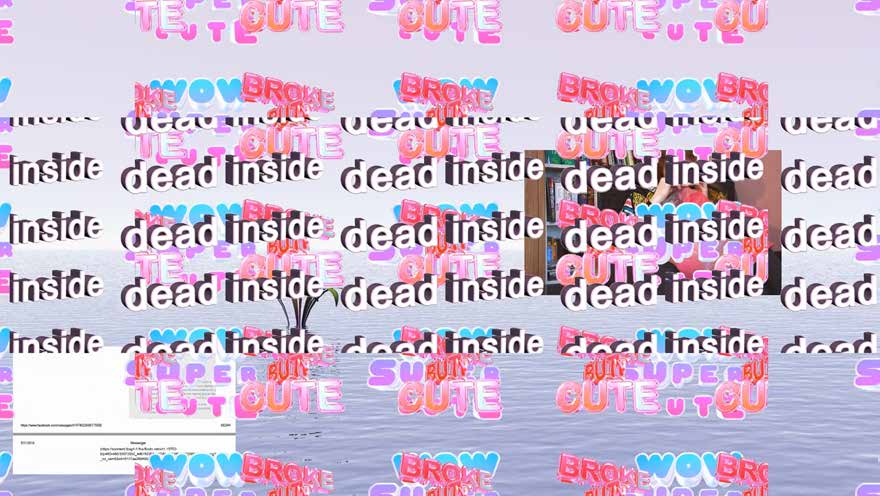
Why am I seing this, 2019. I. Tkalčić.
A collaboration between Ivana Tkalčić, Stephane Chaudron, Nicole Dewandre, and Ian Vollbracht.
More about the work on the artist’s website.
Forever-Do Game & Installation
Artist Jill Townsley's project for Resonances III explored the idea of "fishing" into data sets in order to extract coherent patterns of data and represent them as visual artwork. Networks are one of the techniques used for the analysis of process data. Petri Nets were introduced by Carl Adam Petri in the 1970s. During the Milan Digital Week in March 2019, participants in the Forever-Do Game physically travelled a Petri Net system. As the game was played, a sculptural installation emerged, consisting of piles of boxes – "data-towers". The order and colour of the stacked boxes provided a binary code used to inform the modular build-up of the Forever-Do Sculpture that was constructed for the Resonances III Festival.
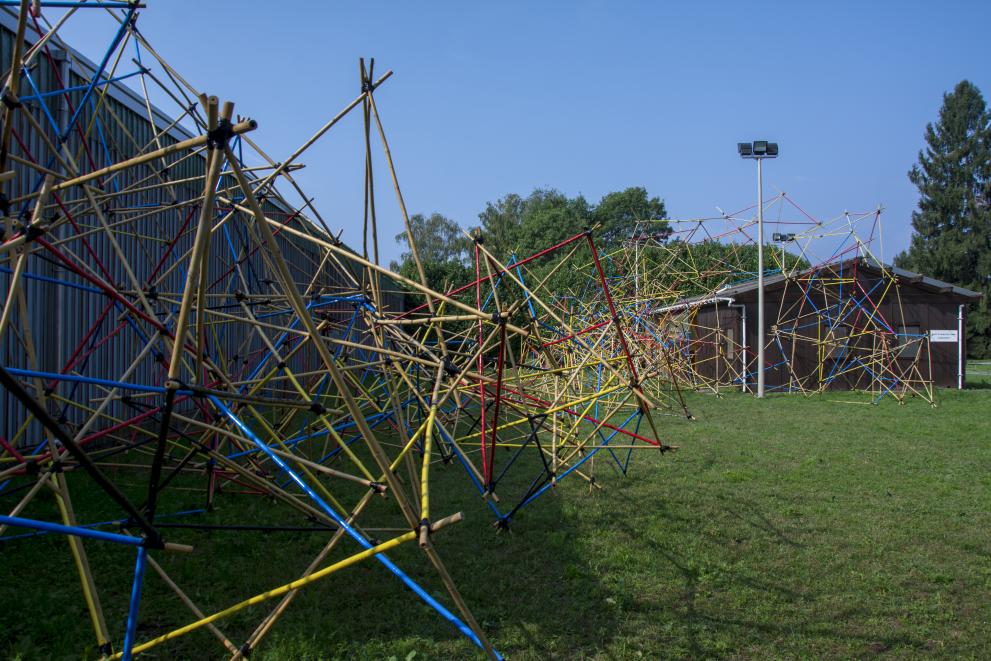
Forever-Do Sculpture, 2019, J. Townsley.
A collaboration between Jill Townsley and Carlo Ferigato.
More about the work on the artist’s website.
DataWe
The abundance and manipulative nature of modern information poses a serious challenge to the human capabilities of processing media in an unbiased fashion. Current levels of affective and physiological computing allows to create an AI-based personalised protective shield – a Mindshield – that would pre-screen both audio-visual media stream in real-time and viewer's reactions to that viewing. As such, it would thus be able to detect narratives of a populist nature or demagogy.
The DataWe performance was a futuristic scenario where technologies like Mindshield are developed, tested and used. With their physiology, participants influenced the audio-visual media on the deliberately delicate subject of immigration. They were connected to the system via electrodermal activity (EDA) sensors to measure emotional arousal. The DataWe system allowed to follow the affective waveform of the "neuronauts" collective in real-time, to assess its homogeneity/significance and to balance the emotionally loaded parts with the abstract generative videos and data visualisations.
DataWe, 2019, A. Väljamäe & A. Mokded.
A collaboration between Alexander Väljamäe & Amal Mokded, David Mair, Blagoj Delipetrev, and Massimo Craglia.
A portrait of the AI as a young Cyber Oracle
At the Resonances III Festival, artist Paul Wiersbinsky presented his lecture performance A portrait of the AI as a young Cyber Oracle - a unique Artificial Intelligence algorithm that generated text and music, interpreted by an Opera Singer in a live performance at the Smart Grids Lab at JRC.
It aimed to expose the creation of an Artificial Intelligence and its workings to a general public, dealing with the bias within programming, the notion of losing control in a world supervised by machines and the utopia of creating an all-knowing Big Data oracle. It wanted to investigate, understand and expose our own relationship towards technology and how humans have always looked for the “ghost in the machine”. A unique algorithm was programmed as part of the project. It utilised the open source code already available, e.g. the language model of the Open AI programme. Part of the work was also to design a user interface to let the user play with different data sets the algorithm used to generate cultural information in order to expose the bias of algorithms as a bias of cultural data sets. The prototype AI was presented to and discussed with the audience during a lecture-performance.
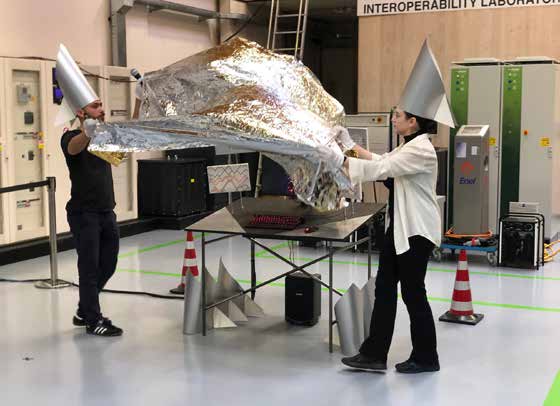
A portrait of the AI as a young Cyber Oracle , 2019, P. Wiersbinski.
A collaboration between Paul Wiersbinski, Blagoj Delipetrev, Henrik Junklewitz and Diana Rembges.
Paul in residence @ JRC 2021.
D.pulex Black Box
D.pulex (Daphnia pulex) is a well-studied model organism with a great eco-responsivity. Artist Nastassia’ Zenovich's installation D.pulex Black Box represents the D.pulex organism as a black box. It displays network data of genes expression of 21 profiles of D.pulex printed on separate transparent layers. Printed networks are transparent at room temperature, the visibility of the networks is controlled by the touch/proximity sensors of the installation. The installation explores system biology and bioinformatics as a science deeply based on collecting and studying big masses of very sensitive personal data.
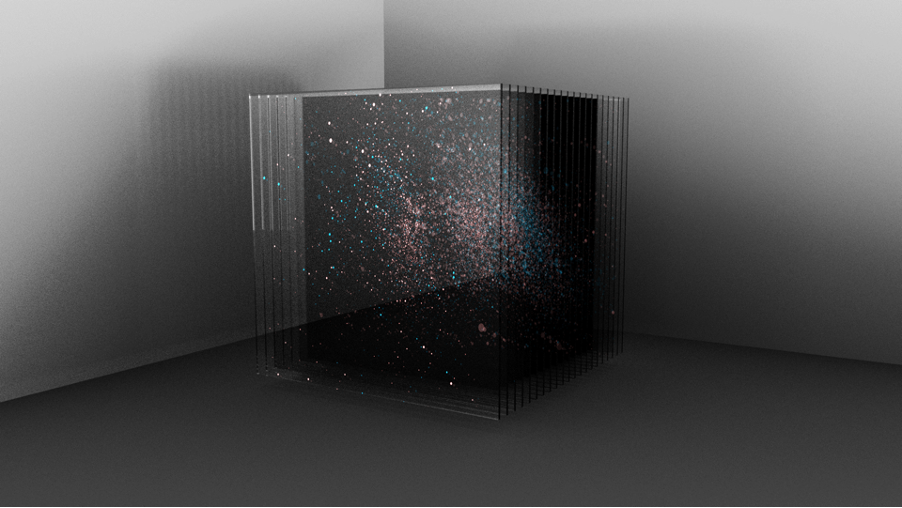
D.pulex Black Box, 2019, N. Zenovich.
A collaboration between Nastassia Zenovich, Mauro Petrillo and Laura Gribaldo.
More about the work on the artist’s website.
